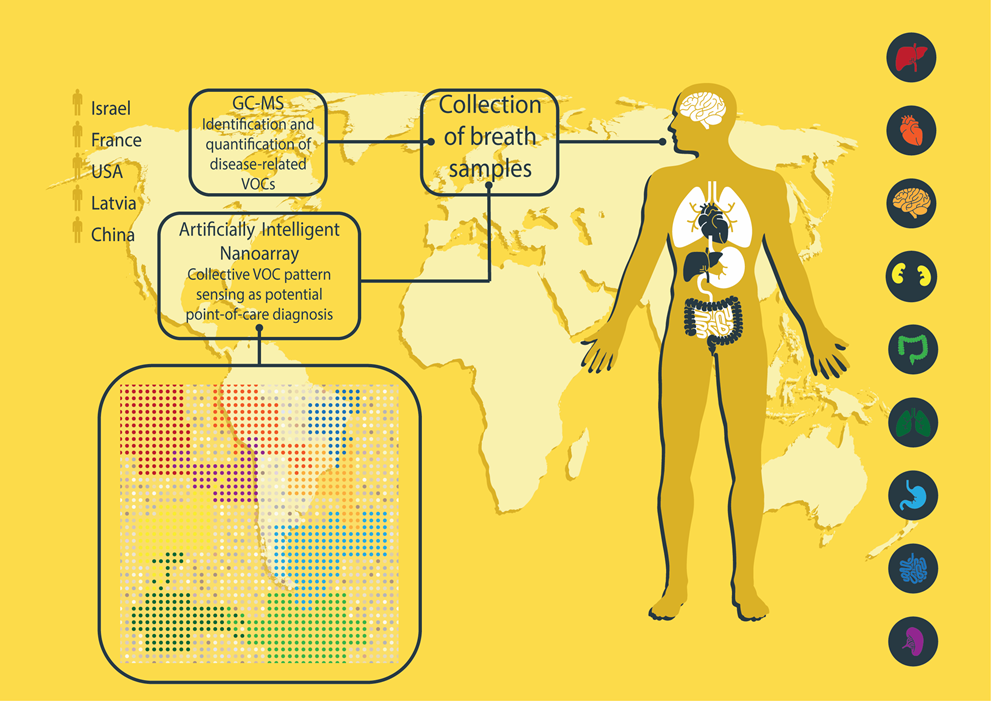A March 20, 2018 news item on phys.org describes a new approach to treating wastewater (Note: Links have been removed),
Humans have known since ancient times that silver kills or stops the growth of many microorganisms. Hippocrates, the father of medicine, is said to have used silver preparations for treating ulcers and healing wounds. Until the introduction of antibiotics in the 1940s, colloidal silver (tiny particles suspended in a liquid) was a mainstay for treating burns, infected wounds and ulcers. Silver is still used today in wound dressings, in creams and as a coating on medical devices.
Since the 1990s, manufacturers have added silver nanoparticles to numerous consumer products to enhance their antibacterial and anti-odor properties. Examples include clothes, towels, undergarments, socks, toothpaste and soft toys. Nanoparticles are ultra-small particles, ranging from 1 to 100 nanometers in diameter – too small to see even with a microscope. According to a widely cited database, about one-fourth of nanomaterial-based consumer products currently marketed in the United States contain nanosilver.
Multiple studies have reported that nanosilver leaches out of textiles when they are laundered. Research also reveals that nanosilver may be toxic to humans and aquatic and marine organisms. Although it is widely used, little is understood about its fate or long-term toxic effects in the environment.
We are developing ways to convert this potential ecological crisis into an opportunity by recovering pure silver nanoparticles, which have many industrial applications, from laundry wastewater. In a recently published study, we describe a technique for silver recovery and discuss the key technical challenges. Our approach tackles this problem at the source – in this case, individual washing machines. We believe that this strategy has great promise for getting newly identified contaminants out of wastewater.
A March 20, 2018 essay by Sukalyan Sengupta, Professor of Wastewater Treatment, and Tabish Nawaz. Doctoral Student, both at University of Massachusetts at Dartmouth on The Conversation website, which originated the news item, expands on the theme (Note: Links have been removed),
Use of nanosilver in consumer products has steadily risen in the past decade. The market share of silver-based textiles rose from 9 percent in 2004 to 25 percent in 2011.
Several investigators have measured the silver content of textiles and found values ranging from 0.009 to 21,600 milligrams of silver per kilogram of textile. Studies show that the amount of silver leached in the wash solution depends on many factors, including interactions between detergent and other chemicals and how silver is attached to the textiles.
In humans, exposure to silver can harm liver cells, skin and lungs. Prolonged exposure or exposure to a large dose can cause a condition called Argyria, in which the victim’s skin turns permanently bluish-gray.
…
Once silver goes down the drain and ends up at wastewater treatment plants, it can potentially harm bacterial treatment processes, making them less efficient, and foul treatment equipment. More than 90 percent of silver nanoparticles released in wastewater end up in nutrient-rich biosolids left over at the end of sewage treatment, which often are used on land as agricultural fertilizers.
Silver is toxic in aquatic environments, a concern that’s becoming more serious with the increased use of silver nanoparticles and awareness that oceans, rivers, and lakes are dangerously stressed.
Sengupta and Nawaz go on to describe their proposed solution (Note: Links have been removed),
Our research shows that the most efficient way to remove silver from wastewater is by treating it in the washing machine. At this point silver concentrations are relatively high, and silver is initially released from treated clothing in a chemical form that is feasible to recover.
A bit of chemistry is helpful here. Our recovery method employs a widely used chemistry process called ion exchange. Ions are atoms or molecules that have an electrical charge. In ion exchange, a solid and a liquid are brought together and exchange ions with each other.
For example, household soaps do not lather well in “hard” water, which contains high levels of ions such as magnesium and calcium. Many home water filters use ion exchange to “soften” the water, replacing those materials with other ions that do not affect its properties in the same way.
For this process to work, the ions that switch places must both be either positively or negatively charged. Nanosilver is initially released from textiles as silver ion, which is a cation – an ion with a positive charge (hence the plus sign in its chemical symbol, Ag+).
Even at the source, removing silver from washwater is challenging. Silver concentrations in the wash solution are relatively low compared to other cations, such as calcium, that could interfere with the removal process. Detergent chemistry complicates the picture further because some detergent components can potentially interact with silver.
To recover silver without picking up other chemicals, the recovery process must use materials that have a chemical affinity for silver. In a previous study, we described a potential solution: Using ion-exchange materials embedded with sulfur-based chemicals, which bind preferentially with silver.
In our new study, we passed washwater through an ion-exchange resin column and analyzed how each major detergent ingredient interacted with silver in the water and affected the resin’s ability to remove silver from the water. By manipulating process conditions such as pH, temperature and concentration of nonsilver cations, we were able to identify conditions that maximized silver recovery.
We found that pH and the levels of calcium ions (Ca2+) were critical factors. Higher levels of hydrogen or calcium ions bind up detergent ingredients and prevent them from interacting with silver ions, so the ion-exchange resin can remove the silver from the solution. We also found that some detergent ingredients – particularly bleaching and water-softening agents – made the ion-exchange resin work less efficiently. Depending on these conditions, we recovered between 20 percent and 99 percent of the silver in the washwater.
The researchers go on to propose a new approach to treating wastewater (Note: A link has been removed),
Today wastewater is collected from multiple sources, such as homes and businesses, and piped over long distances to centralized wastewater treatment plants. But increasing evidence shows that these facilities are ill-equipped to keep newly identified contaminants out of the environment, since they use one common treatment scheme for many different waste streams.
We believe the future is in decentralized systems that can treat different types of wastewater with specific technologies designed specifically for the materials they contain. If wastewater from laundromats contains different contaminants than wastewater from restaurants, why treat them the same way?
Interesting, non? In any event, here’s a link to and a citation for what I believe is the researchers’ latest paper on this subject,
Silver Recovery from Laundry Washwater: The Role of Detergent Chemistry by Tabish Nawaz and Sukalyan Sengupta. ACS Sustainable Chem. Eng., 2018, 6 (1), pp 600–608 DOI: 10.1021/acssuschemeng.7b02933 Publication Date (Web): November 21, 2017
Copyright © 2017 American Chemical Society
This paper is behind a paywall. For anyone who can’t get access, Karla Lant provides a bit more technical detail about the work in her February 2, 2018 article for fondriest.com.


